
views
X
Expert Source
Tu Anh Vu, DMDBoard Certified Dentist
Expert Interview
Even if it doesn’t feel all that great right now, understand that almost all of us have dealt with the same problem and the pain won’t last forever.
Relieving Pain and Cleaning Your Teeth

Take ibuprofen or acetaminophen to ease your pain. Taking over-the-counter pain reliever is the easiest way to manage any symptoms you’re experiencing. For ibuprofen, take 400-600 mg every 8 hours based on your pain level. If you’re taking acetaminophen, take 325-500 mg every 6 hours. Never exceed the daily recommendations as listed on the bottle. Acetaminophen may be better if you don’t have any swelling, while ibuprofen is probably the best choice if your jaw feels a little puffy and sensitive. Either option should take the edge off, though. Even if your wisdom teeth aren’t causing you pain, you still need to see a dentist. It’s not an emergency or anything, but wisdom teeth can cause a variety of problems down the line and it may be easier to deal with the teeth before they have a chance to start causing trouble.

Rinse your mouth with warm salt water to soothe pain and prevent infections. Pour yourself a small glass of warm water and mix in ½ teaspoon (2.8 g) of salt. Take a sip of the saltwater and swig it around in your mouth. Spit the water out into the sink and repeat as needed. This will help any damaged tissue heal. Do not swallow any salt water. Aside from the fact that it isn’t very tasty, salt water isn’t particularly good for your body.

Continue brushing and flossing to keep your teeth clean and healthy. It’s important that you continue taking care of your teeth, even if you have some discomfort from the wisdom teeth. Brush your teeth for at least two minutes, twice a day. Floss at least once a day. You can take it a little easy when brushing the back of your mouth if it’s causing you pain, but neglecting your dental hygiene to avoid temporary pain may ultimately lead to complications with your wisdom teeth. Use a toothbrush with extra-soft bristles to avoid irritating your wisdom teeth if brushing is causing you pain. Temporarily switch to a toothpaste designed for sensitive teeth if your teeth feel especially delicate.
Seeing Your Dentist
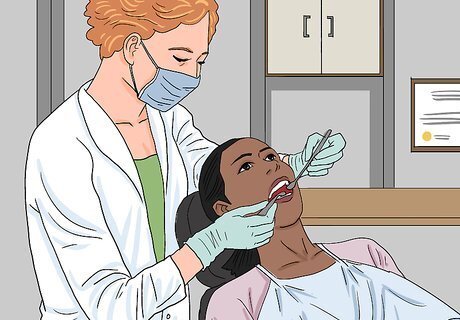
Schedule an appointment to have a dentist take a look. Pain or no pain, a dentist needs to take a look at your wisdom teeth. Call your dentist and explain the problem. Schedule your appointment and show up on time to have a professional take a look and assess the situation. In most cases, the dentist will take an X-ray to get a look at the wisdom teeth. The main issue with wisdom teeth is that they often don’t have enough space to come in correctly, so the X-ray will indicate whether you may have a problem in the next few months as the wisdom teeth continue to come in.
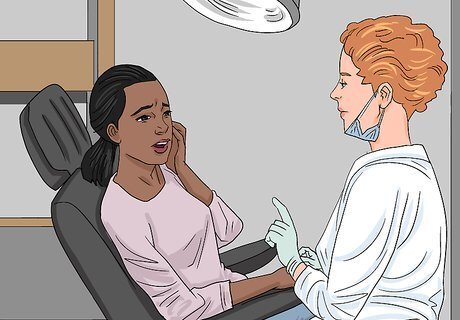
See your dentist soon if you have symptoms of an impacted tooth. Wisdom teeth tend to get impacted, meaning they’re blocked, breaking your gums, or pushing against other teeth. If you have an impacted tooth, the pain may become worse over time. Impacted teeth are also more likely to lead to gum disease or structural problems. If you think you have an impacted tooth, tell your dentist and ask for an appointment as soon as you can get in. You aren’t in any serious danger, but it’s best to deal with impacted teeth soon. Symptoms of an impacted tooth include: Gum inflammation or redness. Jaw pain or swelling. Bleeding gums. Bad breath or an odd taste in your mouth. Trouble opening your mouth all the way.
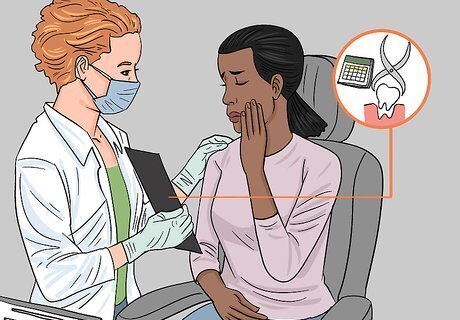
Discuss your options and schedule an extraction procedure if necessary. After they examine your mouth and take an X-ray, the dentist will explain what’s happening with your wisdom teeth. In most cases, they’ll suggest extracting your wisdom teeth, even if your teeth are coming in correctly and they aren’t causing you pain. Go over the options with your dentist and schedule a follow-up appointment.
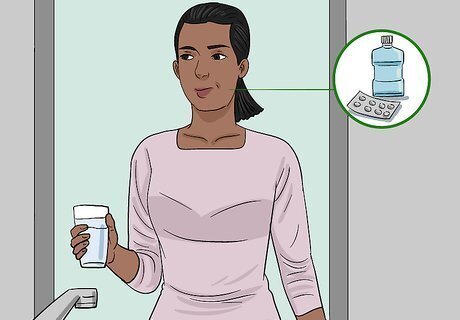
Take any antibiotics or use mouthwash as prescribed by your dentist. To reduce the odds that you get an infection, your dentist may prescribe an antibacterial mouthwash or antibiotics. Wisdom teeth often irritate the gums in a hard-to-reach part of your mouth, which can increase the odds of an infection. Follow the dentist’s instructions regarding any prescriptions they give you to keep your mouth healthy and pain-free in the time between your initial appointment and the follow-up. In extreme cases, your dentist may prescribe pain medication to deal with any intense discomfort you may be experiencing.
Getting the Teeth Removed
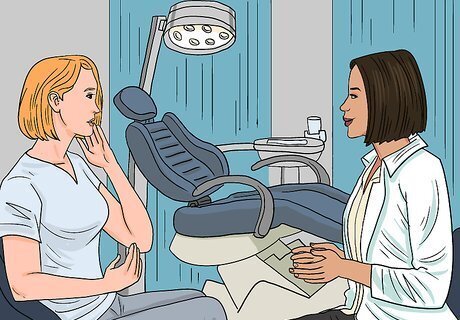
Meet with the oral surgeon or dentist to go over the procedure. Your dentist may go over this with you at your initial appointment, or they may refer you to an oral surgeon. Either way, meet with the dental professional to go over the pre-op instructions and the procedure. This is also your opportunity to go over any questions you may have. In most cases, you won’t be allowed to eat or drink anything before the procedure. You will also need to arrange for someone to pick you up after the procedure is done. Wisdom tooth removal is often partially covered by dental insurance. Sometimes, it’s completely covered. The total cost varies based on the condition of your wisdom teeth, the dentist or surgeon performing the operation, and the type of anesthesia you choose.
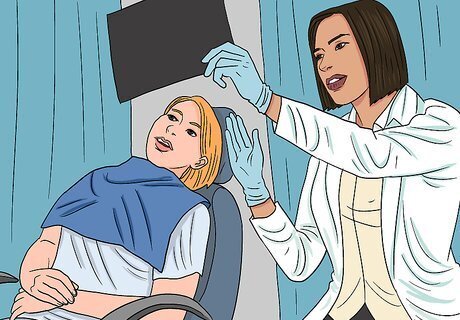
Decide if you want to take all of the wisdom teeth out in one sitting. Depending on what’s going on with your wisdom teeth, your dentist may suggest removing all of the wisdom teeth at once. However, they may give you the choice to keep some of the teeth if they look healthy. The option here is entirely up to you, but many dentists believe that it’s best if you just take all of them out to avoid the need for another tooth extraction in the future. There are a handful of dental organizations and studies that claim you don’t need to remove healthy wisdom teeth. The choice is entirely yours, but don’t assume you’re making a bad decision by only having 1-2 painful teeth removed and leaving the other wisdom teeth be.
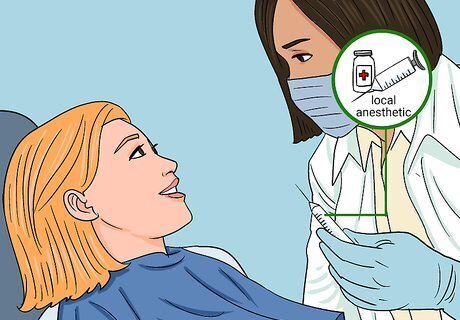
Pick a local anesthetic if you want to be awake for the procedure. In most cases, the dental professional will let you choose the type of anesthetic you’d like to use for the procedure. With a local anesthetic, your mouth will be numb, but you’ll be awake and conscious. You may feel pressure and movement in your mouth, but you shouldn’t experience any pain. This is typically the cheapest option. You may want to go this route if you don’t like the idea of someone poking around in your mouth without you knowing what’s going on.
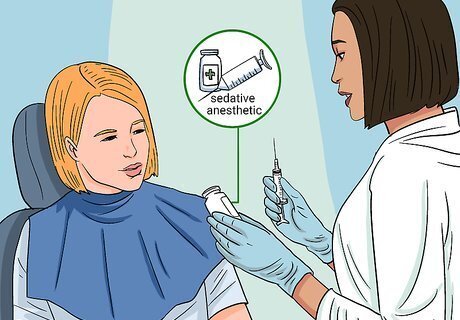
Opt for a sedative anesthetic if you want to be a little out of it for the procedure. A sedative won’t make you go to sleep, but you shouldn’t have any clear memory of the procedure when it’s done. You’ll feel calm, pleasant, and drowsy, but you’ll still be conscious. If you dislike heavy sedatives but you don’t want to know what’s going on, a sedative anesthetic is your best bet. The price of a sedative anesthetic can vary, but it’s usually cheaper than a general anesthetic.
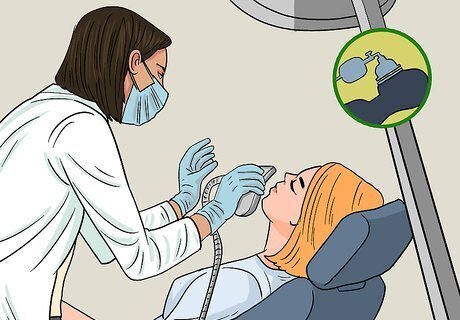
Choose a general anesthetic if you want no memory of the experience. If you opt for general anesthesia, you will completely lose consciousness before the procedure starts. You will experience no pain and you’ll have no memory of the event. If you’re really grossed out by the idea of your teeth being removed, this is probably the way to go. General anesthesia is usually the most expensive option, since it requires additional surgical equipment. Wisdom teeth extractions can be pretty intimidating, so it’s perfectly reasonable to prefer a stronger anesthetic for your procedure.

Arrange for someone to pick you up after the procedure. In some instances, you may need someone to pick you up and drive you home after the procedure. Ask a good friend or family member to come to the hospital or dentist’s office at the end of the extraction. You may feel a little out of it after having the teeth removed, so arrange for your chaperone to take you home. Wisdom tooth extractions are one of the most common procedures in dentistry. Do your best to not worry in the days leading up to the procedure. You’ll be just fine, and any pain you’re currently experiencing should dissipate once you’ve fully recovered. While you may be a little out of it, you shouldn’t experience any serious pain once the procedure is over.
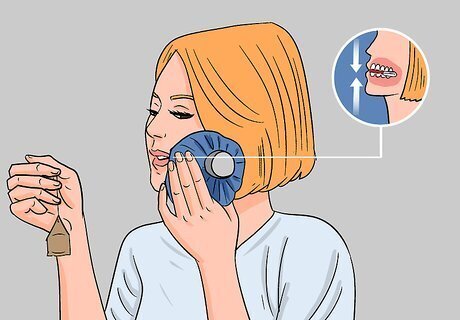
Follow the post-op instructions to avoid complications. After the procedure, keep a gauze pad over the extraction site for 20 minutes. If there’s blood on it after 20 minutes, remove the pad and replace it. A little bleeding is normal, so don’t worry too much. Use ice packs to numb your jaw if you need a little relief and take any pain medication as prescribed. If your bleeding won’t go away, get a moist tea bag and bite gently on it. This will help the extraction site clot and it should curb your bleeding. Don’t brush your teeth for 24 hours after the surgery.

Take it easy after the extraction and drink plenty of water. Just relax for the first 2-3 days after the procedure. Drink plenty of water (and only water) without a straw to prevent a dry socket, which is a rare complication where the nerve becomes exposed. Stick with soft foods and avoid anything spicy. Once the bleeding and swelling stop, you should be ready to get back to normal. Until then, you’ll also need to: Avoid smoking or chewing tobacco. Brush your teeth gently after the first 24 hours have passed. Avoid strenuous physical activity. Avoid messing with or touching the extraction site.

Contact your doctor if you experience any complications. Don’t worry if you have a little bleeding or swelling. This should go away in the first day of recovery. If you feel like you aren’t recovering after 24 hours, contact your dentist to determine if you need to come in for another visit. You may also need to contact your dentist or surgeon if you: Have difficulty swallowing or breathing. Your bleeding won’t stop or it becomes excessive. You have a fever or severe pain that won’t go away. You notice any pus or oozing. Your face feels numb. Your symptoms get worse instead of better.












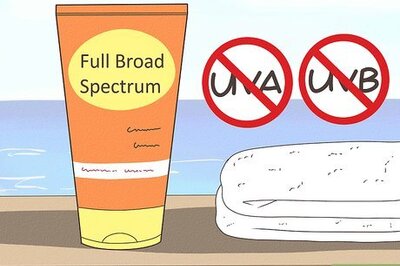





Comments
0 comment